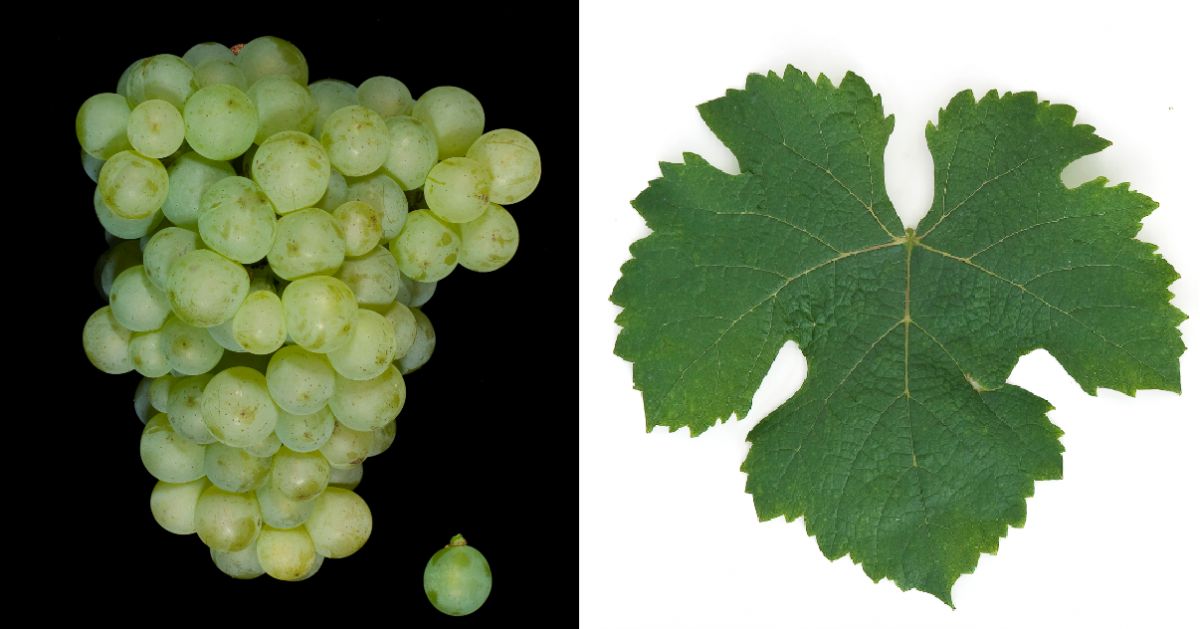The white grape variety originates from France. Synonyms are Fütterer (Germany); Amounedat, Bouillon, Chalosse Blanche, Canut du Lot et Garonne, Dame Blanc, Dame Blanche, Engreat Blanc, Enragé, Enrageat, Folle, Folle de Bordeaux, Folle Girodine, Fou, Grais, Grais Bouillon, Gros Meslier, Gros Plant, Petit Verjus, Piquepoul, Piquepoul du Gers, Picpoult d'Armagnac, Plant de Dame, Plant de Grèce, Rochelle Blanche, Rochelle Verte, Saint Émilion, Taloche du Lot, Talosse (France); Folle Bijeli (Croatia); Matza Zuri, Mune Mahatsa (Spain); Fehér Folle (Hungary). It must not be confused with Claverie (Chalosse Blanche), Fütterer, Knipperlé (Rochelle Blanche), Meslier Saint-François, Petit Mes lier or Piquepoul Bl anc, despite seemingly suggestive synonyms or morphological similarities. It is not a colour mutation of the varieties Fuella Nera, Jurançon Noir or Négrette (all with synonym Folle Noire). According to DNA analyses carried out in 2011, it comes from a presumably natural cross between Gouais Blanc x unknown partner. It was a parent of Jurançon Blanc, Jurançon Noir, Merlot Blanc and Monbadon (natural cross), as well as Baco Blanc, Baco Noir and Folignan (new cross).

The medium-ripening vine is sensitive to spring frosts and susceptible to botrytis, downy mildew and black rot. It produces white wines with high acidity. The variety was first mentioned in 1696 in Chérac (Charente) in southwest France. It used to be widespread and was mainly used as a base wine for the distillation of Cognac and Armagnac. Due to the phylloxera disaster, it was increasingly displaced by Ugni Blanc (Trebbiano Toscano). At the end of the 1950s, the vineyard area in France was still 16,000 hectares. Today, it is mainly cultivated in the Loire region. Under Gros Plant, it is used varietally in Gros Plant du Pays Nantais. The French cultivation area amounts to 1,554 hectares with a continuing downward trend. In Spain, it is cultivated under the names Matza Zuri and Mune Mahatsa on 20 hectares, partly also used for brandy. In 2016, a total of 1,574 hectares of vines were reported (Kym Anderson).
Source: Wine Grapes / J. Robinson, J. Harding, J. Vouillamoz / Penguin Books Ltd. 2012.
Images: Ursula Brühl, Doris Schneider, Julius Kühn-Institut (JKI)
Voices of our members

The glossary is a monumental achievement and one of the most important contributions to wine knowledge. Of all the encyclopaedias I use on the subject of wine, it is by far the most important. That was the case ten years ago and it hasn't changed since.
Andreas Essl
Autor, Modena